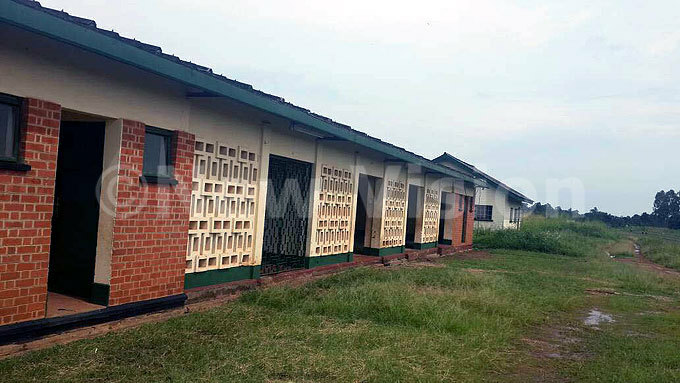Gov't gets support for Gulu Logistics Hub construction
In Gulu the hub will help especially in the clearance of humanitarian aid.
PIC: Proposed site for the logistics hub. (Credit: Prossy Nandudu)
GULU - The ministry of works and transport in partnership with Trademark East Africa (TMEA) is to construct the Gulu Logistics Hub.
The hub will be equipped with warehouses, parking for huge trucks loaded with goods for trade and those meant for relief aid and destined to refugee settlements in the region.
This was revealed by the TMEA country manager, Moses Sabiiti in an interview on the progress on the trade facilitation process that they are undertaking in the country.
According to Sabiiti, construction of the hub will be funded by government with support from the European Union, DFID among other development partners through TMEA.
He said they are currently in the process of procuring a design and supervision consultant that will draw up the designs on how the hub will look like before a construction contractor can be sought. He said that so far they have secured $8million from some donors to kick-start the process.
"This is part of the adoptive programming that we have utilized in our trade facilitation program being stretched to help humanitarian agencies deliver relief items to the people that need it in a conducive environment."
In Gulu the hub will help especially in the clearance of humanitarian aid being distributed in refugee centers in northern region, which is hosting close to one million refugees from mainly neighbouring South Sudan and DR Congo.

Part of the proposed site of the hub. (Credit: Prossy Nandudu)
Sitting on 24 acres of land around the Gulu railway station, the hub is expected to help both traders and aid agencies such as UNFPA, WFP, USAID, Unicef, Red Cross among others, bringing relief aid for refugees in northern Uganda and South Sudan who are on the rise.
For traders, the hub will provide a safe place for cargo as they monitor the security situation in the neighboring countries where the goods are destined.
Sabiiti explained that works on the hub were in response to a study conducted by the Ministry of Works and TMEA that discovered that aid agencies were forced to store food items in tents due to lack of proper storage facilities. As a result some food items could be affected by the changing weather like too much rains and too much heat.
The study also indicated that cargo in this particular area is projected to grow to 306,185 or twenty foot equivalent units per annum by 2021 which calls for the establishment of infrastructure that can handle such volumes.
The hub will have storage facilities for food items, enough parking space, clearing areas, some offices and shelters for those bringing food items as they wait for smaller trucks to deliver the items to refugee settlements.
At the moment, aid agencies use temporary shelters from tarpaulins to store their items before breaking them into smaller bundles for quick transportation because they have no proper storage facilities.
"Sometimes relief items are exposed to rains and too much heat that result into the formation of moulds that produce aflatoxins, said to be dangerous for both human and animal health. With the hub in place with storage facilities, ample parking space and food items will be distributed while still safe," said Sabiiti.
Alfred Olube , the Layibi division chairperson where the hub will be located in Gulu, is however not happy with the slowed process of constructing the hub.
"It's just recently that I called a lady in charge and she told me they are in the processing of getting a contractor, so I am waiting because it will lead to development in the district," said Olube.
Minister of state for refugees, Musa Ecweru, said the number of refugees coming to Uganda is projected to grow to 40,000 by the end of this year and all these will need food aid and other relief items.